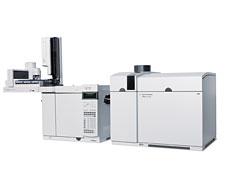|
Instrument Database:
Agilent Technologies Inc. - GC-ICP-MS Interface
| |
|

|
| |
|
| |
|
| Year of introduction |
2001 |
| Status |
available |
| Company |
Agilent Technologies Inc.
|
| Categories |
Hyphenated Techniques: GC-ICP-MS
Mass spectrometer: GC-ICP/MS
|
GC-ICP-MS Interface
Agilent's GC-ICP-MS interface for the 7700 Series ICP-MS and Agilent 7890A GC insures superior GC-ICP-MS performance in the analysis of volatile organic and organometallic compounds. The first commercial GC-ICP-MS interface was developed by Agilent in 2002, and this became the benchmark for GC-ICP-MS performance, due to its fully heated transfer line and torch injector, which permit the analysis of high boiling-point (BP) compounds. These innovations, which remain unique, have been enhanced and refined in the new GC-ICP-MS interface.
Features: - High temperature, dry plasma that delivers superior sensitivity for high ionization potential elements such as Hg, As and Se and the halogens.
- Freedom from background interferences on sulfur and phosphorus enabling trace measurement at elemental masses
- Uniform high temperature maintained all the way to the tip of the ICP injector, preventing peak tailing and loss of high boiling analytes due to condensation in the injector
- Reduced length, simpler installation, and more consistent alignment than the previous model
- Both the transfer line and ICP injector are independently heated and controlled by the GC
- Maximum temperature of 300°C, allowing high boiling-point compounds to be quantitatively transferred to the detector
- Sulfinert interface liner for passive transfer from the GC column to the injector tip, permitting the analysis of reactive compounds, such as many sulfur species
- Argon make-up gas pre-heat in the GC oven maintains gas temperature at compound elution temperature
- The high flow rate of heated argon through the transfer line minimizes the time spent between the GC and ICP torch to less than 100 milliseconds, significantly reducing the opportunity for interaction between the eluting compounds and the transfer line.
- Electronic Pressure Control Module (PCM) for optional gases (such as oxygen to decompose carbon)
|
Related links:
|